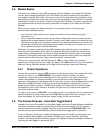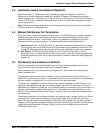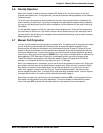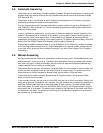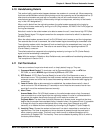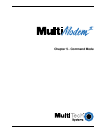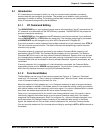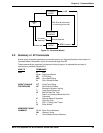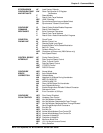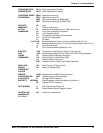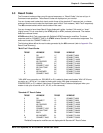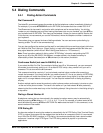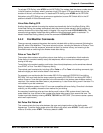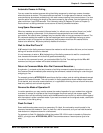
28
Chapter 5 - Command Mode
Multi-Tech Systems, Inc. MT2834BA/BL Series User Guide
5.1 Introduction
AT commands are the means by which you, and your communications software, are able to
communicate with and configure your modem. They enable you to establish, read, and modify
parameters in addition to dialing. The following provides both a summary and a detailed explanation
of the AT commands recognized by the MultiModem.
5.1.1 AT Command Editing
The BACKSPACE key on your keyboard can be used to edit characters in the AT command line. An
AT command is not executed until the RETURN key is pressed. The BACKSPACE key erases the
previous character for reentering.
The BACKSPACE key does not erase the AT characters once they are entered. If your keyboard
has no BACKSPACE key, CTRL-H does the same thing. The character recognized by the modem
as BACKSPACE may be changed to any other ASCII character with S-Register S5.
If you wish to cancel an entire command that has been entered but not yet executed, enter CTRL-X.
This also clears the command buffer. The effect is the same as backspacing to cancel the entire
command, only quicker.
Characters entered in a command are stored in the modem's Command Buffer (memory) until
executed by hitting RETURN. The Command Buffer's capacity is sixty characters. The Attention
Characters AT do not count in the sixty allowed Command characters. Spaces, which may be used
for increased display readability, may be used when entering a command, but are not stored in the
Command Buffer and are not counted in the sixty allowed characters. Hyphens, parentheses, etc. are
not allowed.
If the sixty character limit is exceeded or if invalid characters are entered, the Command Buffer
automatically erases, and an ERROR message appears. You would then re-enter your command
within the sixty-character maximum, using only the allowed characters.
5.1.2 Functional Modes
The MultiModem can be in one of two functional states (see Figure 4-1). These are "Command
mode" and "On-line mode". (There is also an in-between state, "Wait-for-Carrier", where the modem
is out of Command mode but not yet really On-Line.
When the modem is initially powered up, it is in Command mode and is ready to accept commands
from your keyboard or software. The modem enters On-line mode after dialing, making a connection
with another modem, and then detecting a valid carrier signal. If no carrier is detected within a certain
time frame, the modem abandons the call and re-enters Command mode.
Once on line, the modem exits On-line mode if one of two conditions is met. If the carrier is lost or
intentionally dropped, the modem hangs up and re-enters Command mode. Also, if the modem
recognizes the Escape sequence for which it is configured (i.e., either the Escape characters in the
serial data stream, the Remote Escape characters in the modulated data stream, or the Break
signal), the modem will exit On-line mode, retain the datacomm link, and enter Command mode.
You can force the modem into On-line mode without dialing by sending the ATD or ATA command to
the modem.



